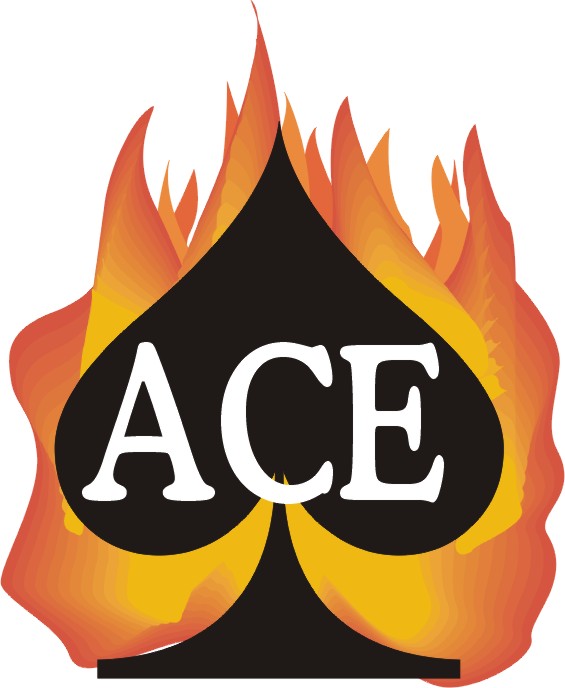ACCESS
CONTROL
There are many ways for
individuals to limit or control access to key areas of a building
whether it's an office, home, or warehouse. The least expensive (and
probably the easiest to circumvent) is a passage lock and key. There
are locksets that are more difficult to disable (some are even pick-proof),
but where controlling access to an area can leave nothing to chance
(such as a lost key), only a dedicated security system can provide
the answer.
There
are a number of solutions available these days. Let's look at some
of the components that are common to most access control systems.
- The
door strike
- is a device that acts very similar to a normal dead-bolt strike
plate, the main difference being that one side (the side that
happens to coincide with the way your particular door "swings"
open), can be electronically "released". This allows the door
to open even though it's "on the latch" or locked. It also permits
an easy way of exiting the secured area as most passage sets allow
you to open the door without using a key when you're leaving.
- The
magnetic lock - is a device usually in the shape
of a plate located at the top of the door along the same side
of the frame as the lock. When turned "on", an electrical
current activates a magnetic coil that attracts the plate on the
door and prevents it from being opened. There are several models
available, all with varying "holding power", the most commonly
specified is around 3000 lbs. What this means is that a force
of 3000 lbs. would have to be exerted against the door to "force"
it open. Needless to say you would need a block and tackle or
the pushing capacity of a small truck to obtain the force necessary
to open a door secured in this manner (ten "SUMO Wrestlers"
working in tandem would do the trick, but squeezing ten 350 lb
guys into a three and a half foot space would be rather difficult).
There
are advantages and disadvantages to both locking systems. They are
listed here:
DOOR
STRIKES
1. They are inexpensive;
2.
They are vulnerable to physical force unless some form of shielding
is installed to restrict access to the actual locking hardware;
3.
They are sold as "fail-locked" or "fail-safe" - in the absence of
electrical power (such as a power failure) they can either remain
locked or open to allow entry/egress;
4.
They are fairly easy to tamper with (the strike plate is readily
accessible with the door open which would allow someone to sabotage
or circumvent the unit).
MAGNETIC
LOCKS
1.
They are more expensive;
2.
They are installed on the "secure" side of the door which doesn't
allow anyone to access the unit from the "outside";
3.
Unless some provision is made to provide back-up electrical power
(a stand-by power supply with battery) the door will become unsecure
during a power failure. Even with this measure in place, an extended
power failure may compromise the door;
4.
There are no moving parts, and all connections are routed through
the door's frame which makes tampering with the unit extremely difficult.
NOTE:
The City of Vancouver
has adopted a policy with respect to
electronic door latching hardware. On commercial and residential
buildings only magnetic locks are approved. They must release
upon activation of a fire alarm, or by means of a panic bar
(located on the inside of the door of course). Please consult
your own municipal electrical inspections branch before installing
any locks of this type.
|
The
next device "in line" from the door strike or mag lock is a means
of legitimately opening or "releasing" the door. In most residential
high-rise apartment applications this entails a means of communicating
with the occupants of the premise (an intercom system) and positiveily
identifying the visitor (a CCTV camera) before allowing them entry.
The use of a keypad or touchpad allows authorized persons to punch
in an access code which in turn opens the door. Other systems use
magnetic swipe cards or special key-fobs instead of a touchpad. In
either instance, it is far simpler to control access to the premise
utilizing this technology rather than standard house keys which can
be copied, lost or stolen. Replacing a code or swipe card is much
more cost effective than having to re-key an entire building.
ACE FIRE
PREVENTION
PREMIUM ACCESS CONTROL SERVICE
Ace
Fire Prevention Ltd. provides
service to all makes of access control equipment. Here is a partial
list of manufactured access control products which we DO
service. We wish to state that all the product manufacturers listed
here may no longer produce certain equipment models and it may not
be possible to obtain replacement parts. Some manufacturers may not
be listed here.
Please
contact us if your
system is not listed here!
| Product |
|
| Entry
Systems |
Sentex,
Aiphone, Mircom, Silent Knight, Mirtone, Sentron, Sentech,
Cardkey, Cantech, Northern Computer, Cardtrol, Keyscan,
IEI, Enterphone, Modern, DSC, Inova |
| Readers |
HID,
Hughes, Motorolla, Cantech, Cardkey, Keyscan |
| Touchpads |
IEI,
HID, DSC, ADI, Huges, Cantech |
| Locking
Hardware |
Rutherford,
Rofu |
|
fire
extinguishers / emergency
lighting / sprinklers
/ fire alarm / cctv
access control / intercom
/ ulc monitoring
/ emergency plannning
about us / Bailey's
page / contact us!
home
Copyright
© 2005 - 2009 by Ace Fire Prevention Ltd.
All rights reserved.
E&OE


